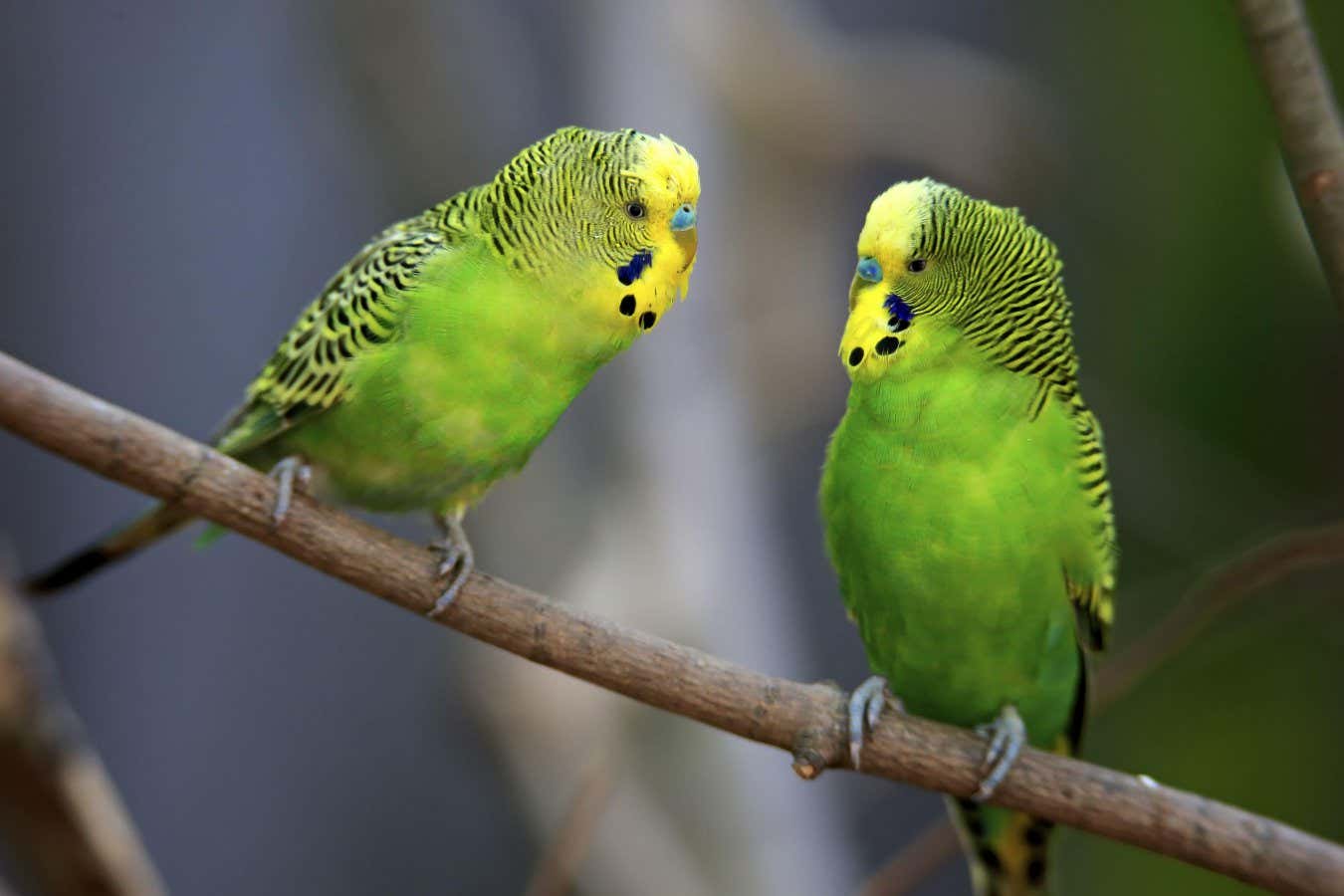Recordings of brain activity in budgerigars reveal sets of brain cells that represent different sounds like keys on a keyboard – a structure never seen before in any bird brain
By Michael Marshall
19 March 2025
Budgerigars have exceptional vocal abilities
imageBROKER.com / Alamy
Budgerigars are some of the chattiest birds, and that is reflected in their brains. Budgie brains contain a map of vocal sounds, which is similar to that found in the human brain and has not been seen in any other bird.
“We found that there was a representation of vocal sounds in a part of the brain that is analogous to a key speech region in the human brain,” says Michael Long at the New York University Grossman School of Medicine.
Read more
Pigeons are misunderstood: These little-known facts will prove why
Advertisement
Budgerigars , also known as parakeets, are small parrots native to Australia. They are spectacular vocal learners, able to mimic a variety of sounds including human speech. A budgie called Puck had a vocabulary of about 1728 words, according to Guinness World Records. “The ability to vocally imitate is something that is extremely rare in the animal kingdom,” says Long.
With Zetian Yang, also at NYU’s medical school, Long used silicon probes to record the electrical activity in budgies’ brains. They focused on part of the forebrain, the central nucleus of the anterior arcopallium, which was known to be involved in the motor control of vocalisations. As the budgies made calls, Long and Yang tracked how their electrical activity changed.
“Our study was the first to measure the activity in the parrot brain during vocalisation,” says Long.
